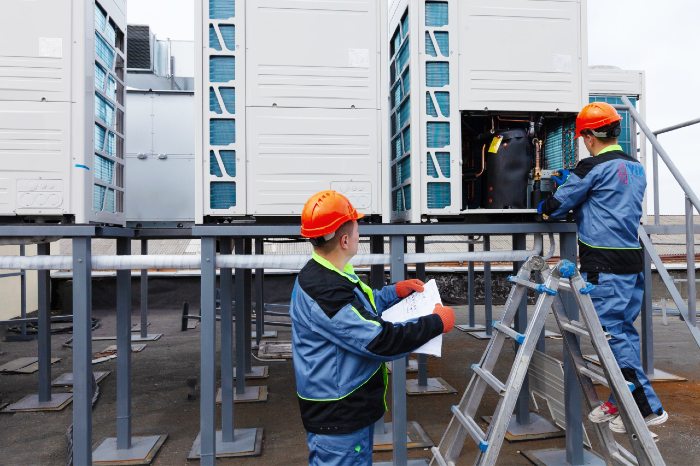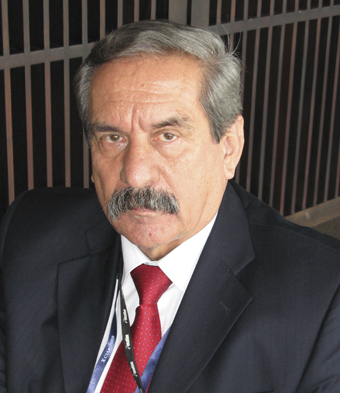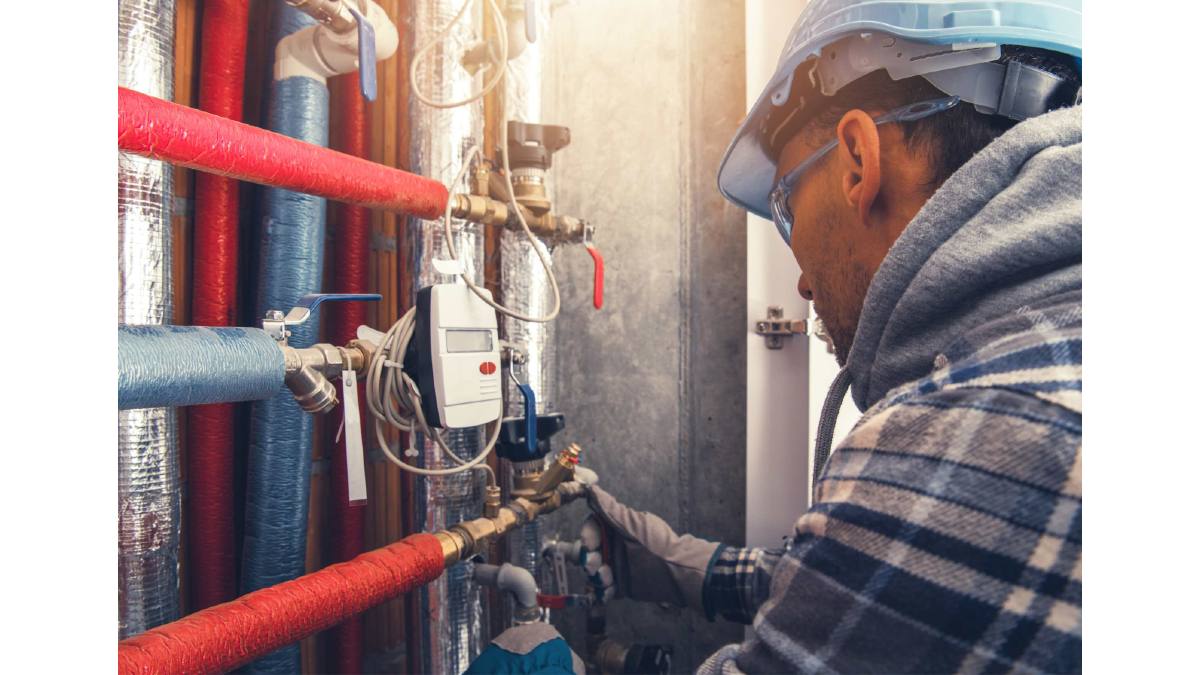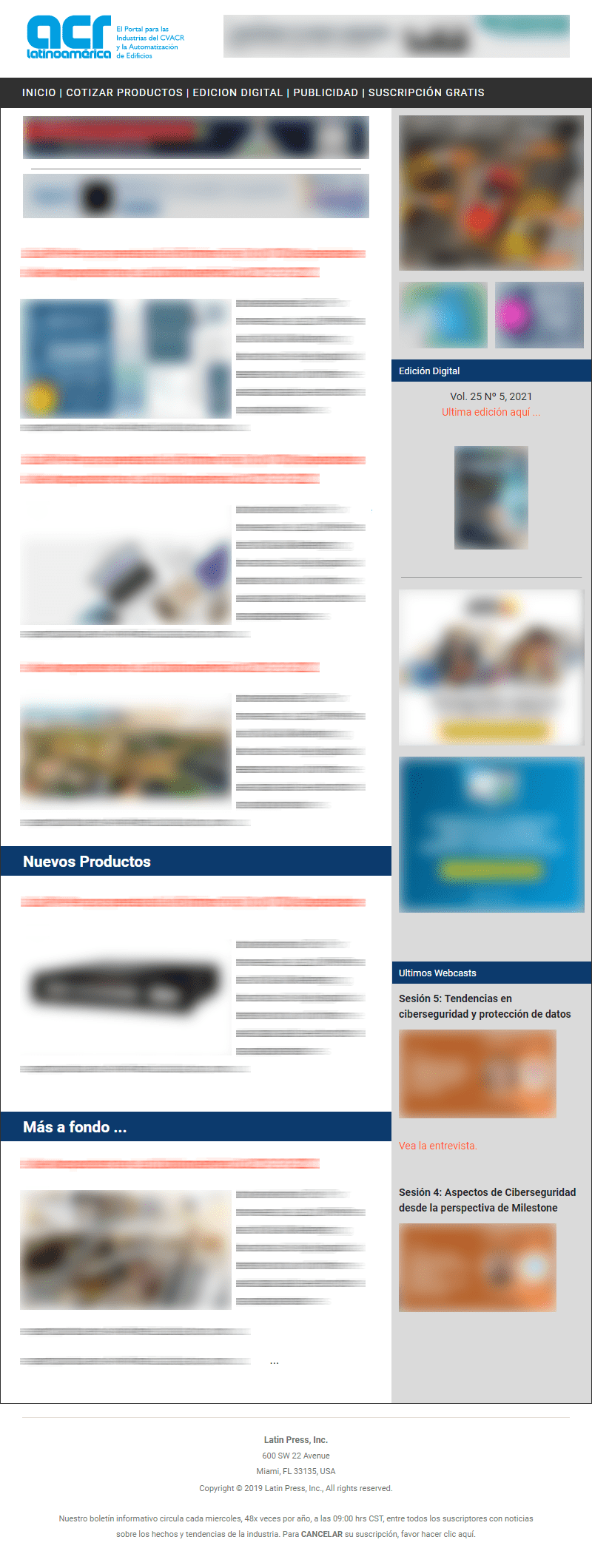A process such as maintenance is of high relevance in the industry and has different phases that deserve to be highlighted, analyzed and remembered by those who are responsible for this phase.
By Eng. Camilo Botero*
In the 80s, the National Learning Service SENA and the Colombian Federation of Metal Industries - FEDEMETAL (now defunct), joined forces to offer the productive sector a Maintenance Manual, of which I was the author, as a contribution to the national purposes of economic openness and modernization of production.
At this moment I am in the process of updating this book, to one that I will entitle: Technological Management of Maintenance for Air Conditioning Systems, for which I would appreciate any suggestion or contribution from the kind readers of my columns in the ACR magazine, related to the Maintenance of your air conditioning systems, both for human comfort, and for industry and different and varied applications.
While it is true that we must carry out a great awareness campaign on the need for maintenance, it is undoubted that this alone is not enough, but it is necessary to accompany it with the supply of tools that make its development possible and that contribute to the administration of its use and application.
This is how the elements that allow not only to propose and program it but also to determine its costs, organize the warehouses and use the computer as a maintenance tool, all based on the ASHRAE Standard 202, in its O&M phase, will be developed in a logical way, all based on the ASHRAE Standard 202, in its O&M phase. which defines how to achieve the assurance of the quality of projects, throughout their useful life.
We understand that it will not be a finished product, so we expect the contributions of those who use it to improve and update it, so that it can provide the service for which it was designed, such as contributing to the achievement of greater efficiency, productivity, reliability and competitiveness of air conditioning systems.
The deficient administrative training of the personnel who work in the maintenance of air conditioning systems means that this group, which is fundamental for their proper functioning, often does not adequately meet the objectives defined in the strategic planning, ultimately achieving total user satisfaction. Maintenance is a labor-intensive activity, technically and administratively highly qualified and also with a vocation for service, self-denial and great stoicism.
During the performance of my duties as an Engineer of assemblies and major repairs, and of the general services of the plants in their design, installation and maintenance, and finally, as manager of the Metalworking Division of Carvajal S.A., I verified that there is a need, both in the Faculties of Engineering and in the Technical Training Institutes and in companies of any kind to prepare their students or employees in Technological Management of maintenance.
To this end, I intend to update my Industrial Maintenance book, to provide the Manager, Chief, or Maintenance Engineer of air conditioning systems with the concepts and theories necessary to make up for this lack and optimize their performance.
What is maintenance?
Maintenance is a set of activities that must be carried out on air conditioning systems, in order to correct or prevent failures, seeking that they continue to provide the service for which they were designed. Obviously, a group of specialists must be organized to take care of this and thus constitute a maintenance organization.

From the point of view of those who manage the maintenance, the main objective is the conservation of the service. That is, air conditioning systems must be maintained for their conservation and to ensure that the function it performs is fully fulfilled and maintained, as designed; The above should always be based on the balance of the following factors:
- Minimize operation and maintenance costs.
- Minimize the Costs of Downtime of the systems, for damages and repairs.
- Maximise the use of the capital invested in facilities and equipment, throughout their useful life, guaranteeing safety.
Traditionally, engineers and technicians operating in the field of maintenance engineering give greater importance to technical aspects, leaving in the background what concerns their technological management and the
logistical aspects, which always results in a low level of service, high costs and too many tensions and frictions in the execution of the service.
Types of maintenance
- Corrective maintenance.
- Periodic maintenance.
- Scheduled maintenance.
- Predictive maintenance.
- Maintenance under conditions.
- Preventive maintenance.
- Mixed maintenance.
Corrective maintenance
As its name indicates, it is a maintenance aimed at correcting a failure that occurs at a certain time. In other words, it is the system that determines the stops. Their primary function is to get the equipment up and running as quickly and at the lowest possible cost. This maintenance is generally the only one that is carried out in small companies. The steps to follow when a corrective maintenance problem arises can be the following:
- Identify the problem, its causes and study the different alternatives for its repair, evaluating the advantages of each alternative and choosing the optimal one
- Plan the repair according to available personnel and equipment and supervise the activities to be carried out.
- Classify and file information on times, personnel and response to the work carried out, as well as the different observations in this regard.
This type of maintenance has a series of drawbacks in various areas of the company, namely:
Personnel: In the beginning, that is, when the equipment is new, only a small group of technicians will be necessary to attend to the failures that occur, but with the passage of time, the wear and tear of the equipment will be greater and will result in an increase in the number of failures, which can no longer be attended by the same group of people. which makes it necessary to hire more maintenance personnel to attend to all the damages.
Machinery: A small deficiency that does not manifest itself can, over time, cause other parts of the same equipment to fail, thus turning a small fix into a larger repair that increases costs due to increased equipment downtime. This could have been avoided by replacing the element in time, damage that would have been detected during a preventive check.
Inventory: It could almost be said that the spare part required to solve a fault is not in the warehouse at that time, because there is no information on the type and quantity of spare parts needed. The achievement of these elements externally causes the delay to be greater and costs to increase. This information, as in the previous case, could have been obtained through continuous preventive checks.
Safety: Safety will be affected if the failure coincides with an event that cannot be postponed in production and equipment is forced to work in conditions of risk for both personnel and machinery.
Quality: Finally, the quality of the service or product will be seriously affected, since the progressive wear and tear of the air conditioning equipment will cause a deterioration in its quality.
In any case, practice teaches that corrective maintenance is inevitable, even if a preventive maintenance program has been implemented, since at any time failures that were not foreseen can occur.
It is worth noting the existence of equipment or instruments that, due to the great need for adjustments for optimal operation or because they have a delicate configuration as in electronic equipment, or because they have been working for a long time without disturbing, it is preferable not to check them to avoid losing the adjustment acquired over time or damaging them; then it is recommended to wait for them to fail, and at that time make a total repair that leaves them in optimal working conditions. This practice is common when you have a backup team.
Periodic maintenance
This type of maintenance, as the name implies, is one that is performed after a generally long period of time (between six and twelve months). This maintenance is usually practiced in process plants such as petrochemicals, sugar, paper, cement, etc., and consists of making large stops in which major repairs are carried out. Generally, the decision to implement this type of maintenance is not in the hands of the Maintenance department due to the complexity and high costs that are handled, and it is also almost non-existent today. This type of Maintenance has fallen into disuse.
Scheduled Maintenance
This is another maintenance system that is practiced today and is based on the assumption that parts always wear in the same way and in the same period of time, even if they are working under different conditions. In this type of maintenance, a detailed study of the factory's equipment is carried out and through it, with the help of statistical data and information from the manufacturer, the parts that must be changed, as well as the frequency with which the changes must be made, are determined. Once this is done, a work program is drawn up that meets the needs of the team. It is also in disuse.
Predictive maintenance
It consists of making non-destructive measurements or tests using sophisticated equipment on parts of machinery that are very expensive or that cannot be allowed to fail unexpectedly, as they risk the integrity of the operators or cause considerable damage. Most inspections are carried out with the equipment running and without causing production stoppages. The trend is to use this type of maintenance more and more.
The most frequent non-invasive measurements are:
Thickness: with ultrasound.
Noise: with noise level meters or decibel meter.
Vibrations: with amplitude, speed and acceleration meters.
Temperature: with infrared rays, that is, thermography.
Fractures: with x-rays, magnetic particles, developer inks or eddy currents, ultrasound.
Predictive maintenance only informs and serves as the basis for a good preventive maintenance program.
Maintenance under conditions
This, more than a type of maintenance, is a practice that must be followed when a certain maintenance system is implemented and consists of adapting the program according to the conditions of use or operating conditions (climate change, for example), taking into account mainly the effect that this causes on the equipment. In other words, through this practice you keep updating the existing program.
Preventive maintenance
To avoid confusing this Maintenance with a combination of periodic and scheduled maintenance, it should be emphasized that the essence of this is the scheduled reviews and inspections that may or may not result in a corrective or change task. This system is based on the fact that the parts of a piece of equipment are worn unevenly and it is necessary to service them rationally, to ensure their proper functioning.
Preventive maintenance is that which is carried out through a program of activities (revisions, adjustments, lubrication), previously established, in order to anticipate the presence of failures in facilities and equipment.
This program is based on the study of the service needs of a team, taking into account which of the activities will be done with the stopped equipment and which when it is in operation.
In addition, the time taken by each operation and the frequency with which it is carried out are estimated, in order to be able to determine the man-hours required by a maintenance task, as well as the people who are going to be employed at certain times of the year.
The success of a Preventive Maintenance program lies in the detailed analysis of the program of each and every one of the machines and in the strict compliance with the activities, for which purpose a strict control must be carried out.
Depending on the type of entity, institution, company and/or industry, the development achieved by it, as well as the established policies, several of the aforementioned alternatives can be combined for the purposes of better maintenance, thus carrying out mixed maintenance.
 * Camilo Botero was Secretary of the Federation of Ibero-American Associations of Air Conditioning and Refrigeration - FAIAR; he was president of ACAIRE and is president of Camilo Botero Ingenieros Consultores Ltda. He is currently a professor at his CBG Academy. He has also worked as a teacher in several Colombian universities, guilds and currently at ACAIRE in diploma courses on air conditioning projects, energy efficiency in air conditioning and refrigeration, cogeneration and trigeneration, applied psychometrics, thermodynamics, fluid mechanics, heat transfer and turbomachinery.
* Camilo Botero was Secretary of the Federation of Ibero-American Associations of Air Conditioning and Refrigeration - FAIAR; he was president of ACAIRE and is president of Camilo Botero Ingenieros Consultores Ltda. He is currently a professor at his CBG Academy. He has also worked as a teacher in several Colombian universities, guilds and currently at ACAIRE in diploma courses on air conditioning projects, energy efficiency in air conditioning and refrigeration, cogeneration and trigeneration, applied psychometrics, thermodynamics, fluid mechanics, heat transfer and turbomachinery.
Contact: [email protected]















